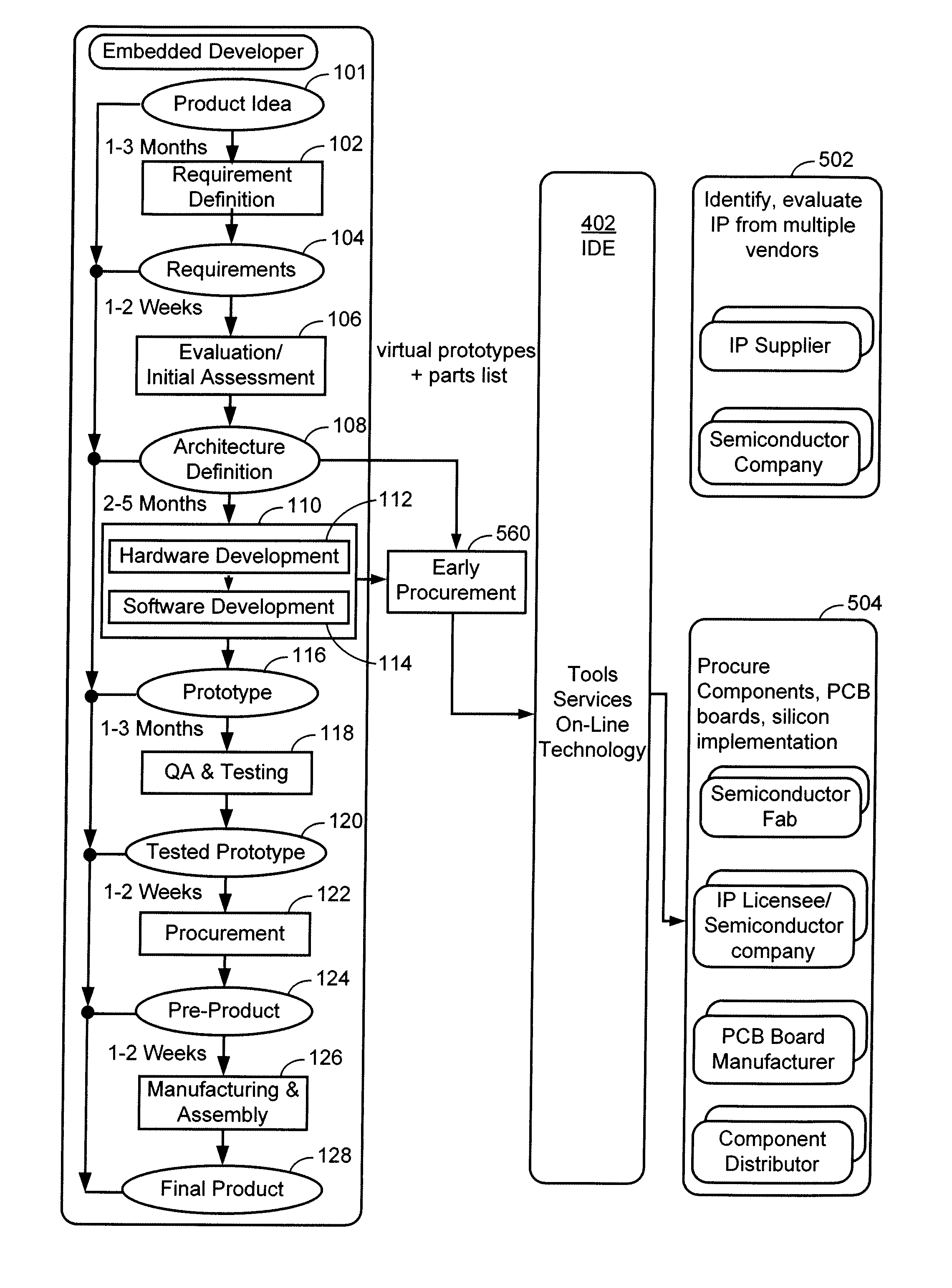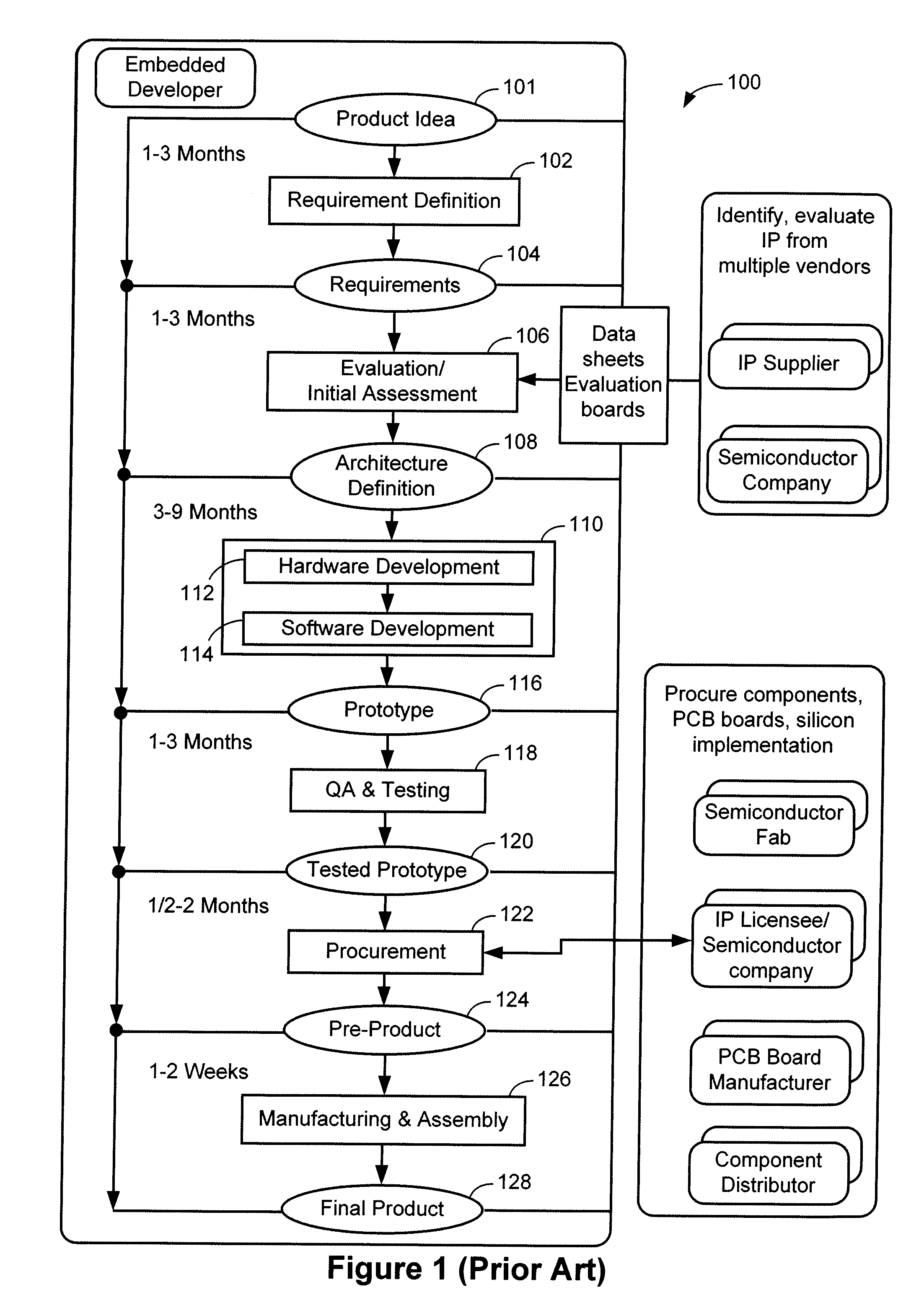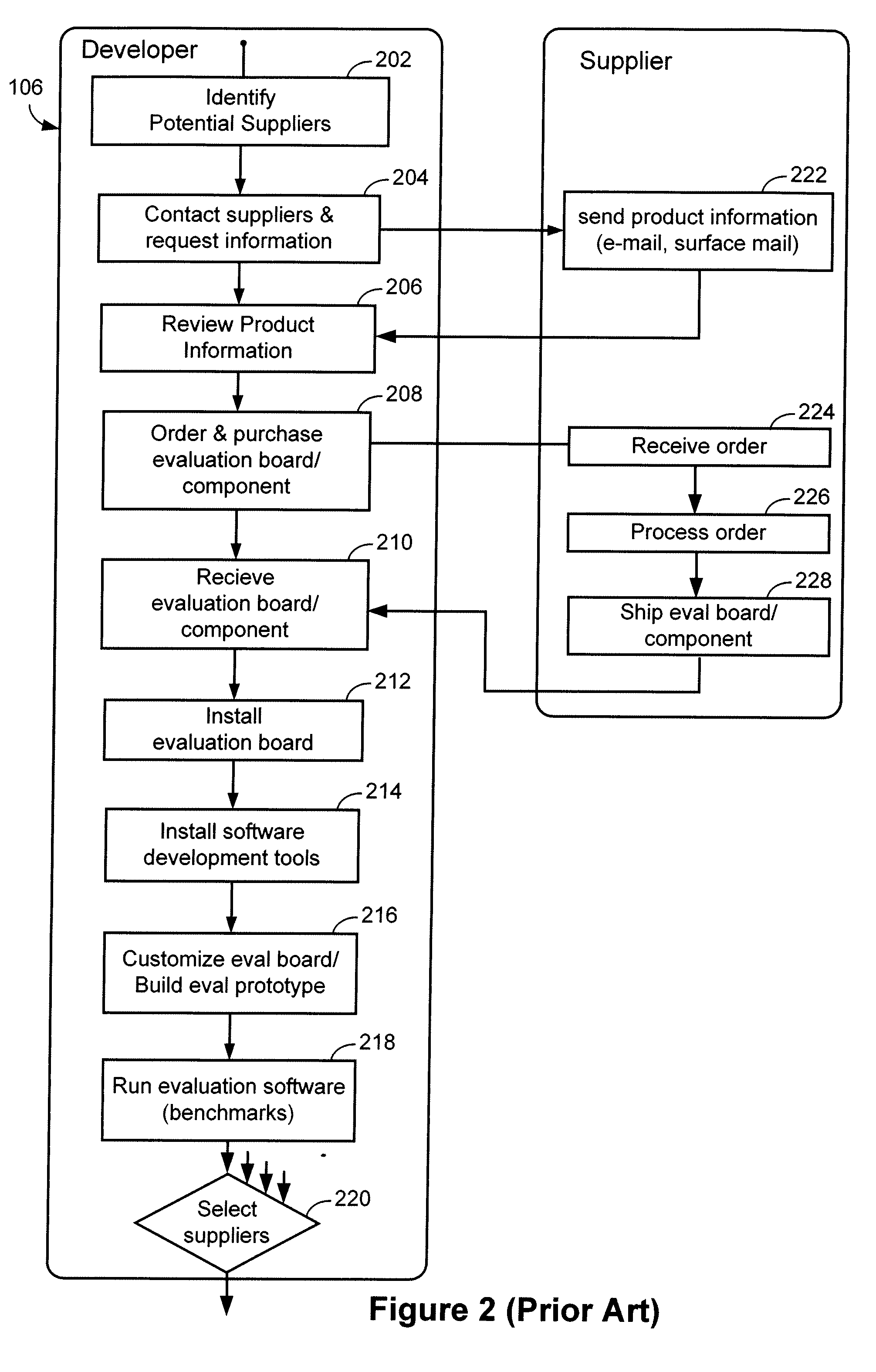However, typically a significant amount of code must be written for the
software partition of a particular project.
Because of the nature of embedded
system design,
documentation alone is typically insufficient to understand how an IP component, such as a processor core, will function with a software application running
user code.
In some cases, a significant time
delay may be involved for a vendor to arrange for evaluation boards having custom
silicon and printed circuit boards to be designed and manufactured.
Moreover, each evaluation board may have a significant cost (e.g., thousands of dollars) such that a vendor will only maintain in stock a limited number of evaluation boards at any one moment of time.
Consequently, in some cases embedded system designers may have to wait substantial periods of time to obtain an evaluation board.
From the standpoint of the embedded system designer, the evaluation phase 106 is a
time consuming and costly process, particularly if a significant number of IP blocks from different vendors are to be evaluated.
In addition to being a
time consuming process, each IP block can be evaluated only in isolation, which can make it difficult to determine how several IP blocks would interact together in a single embedded system.
From the perspective of the IP vendor this is a costly marketing tool that requires IP vendors to invest in creating
standard test board platforms (e.g., boards including reference
peripheral devices and driver applications).
The cost to the IP vendor includes the cost of the evaluation boards and the
support services that must be provided for potential customers to successfully evaluate each board.
Unfortunately it may take up to two-thirds of the development cycle before the hardware implementation reaches a high level of implementation detail and a physical hardware emulator 308 is configured.
However, a conventional hardware emulator is comparatively expensive.
In some embedded system projects a hardware emulator (e.g., a FPGA hardware emulator) may not be cost effective such that much of the
software development and integration must wait until a physical prototype is available.
Procurement significantly earlier than the tested prototype stage 120 is typically impractical because there is an insufficient quantity and quality of
documentation prior to the tested prototype stage that would permit procurement needs to be adequately communicated with vendors.
Embedded systems designers are under increasing pressure to reduce the
time to market and to increase the software functionality of embedded systems, which in turn tends to increase the complexity of embedded
system software.
However, conventional automated design tools have serious shortcomings that limit their usefulness in the
design cycle, particularly for embedded systems executing complex software applications.
One drawback of conventional
electronic design approaches for embedded systems is that they are hardware-centric and typically have an execution speed that is too slow for the
simulation to serve as a hardware emulator for the purposes of debugging software.
However, modeling the hardware implementation in HDL requires that the hardware be extensively developed (e.g., fully detailed) before the software, which can require a significant length of time in the development cycle.
In addition to its other problems, a HDL
simulation (e.g., one using a cycle-accurate
processor model and a detailed implementation model of hardware) has such a high level of implementation detail that a software application executed on HDL simulation of the hardware partition would be too slow for meaningful
software debugging during a typical development phase.
However, HDL models typically execute at too slow a speed to permit a software designer to evaluate the system aspects in which a software designer is interested.
A further drawback of HDL models is that it is often impractical to share them with third parties that are not legally bound to maintain the
confidentiality of the model.
HDL models have such a high level of implementation detail that companies are reluctant to share HDL models with other companies for fear of losing valuable proprietary trade secrets.
As one consequence, IP vendors typically do not provide HDL models of their products for evaluation.
Another consequence is that embedded system designers and IP vendors typically do not make HDL models of IP components and sub-systems available on
the Internet.
The problems associated with conventional embedded system design projects can be anticipated to become worse as improvements in the
processing power of embedded systems permits embedded systems having more complex software applications.
However, conventional automated design tools do not provide the right level of abstraction, quick model creation, ease of use, execution speed, and understandability to permit substantial improvements in the evaluation, development, and procurement phases of an embedded system design project.
 Login to View More
Login to View More  Login to View More
Login to View More 


